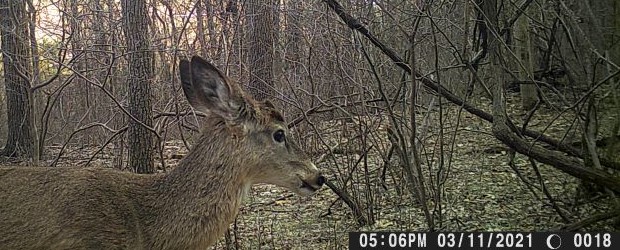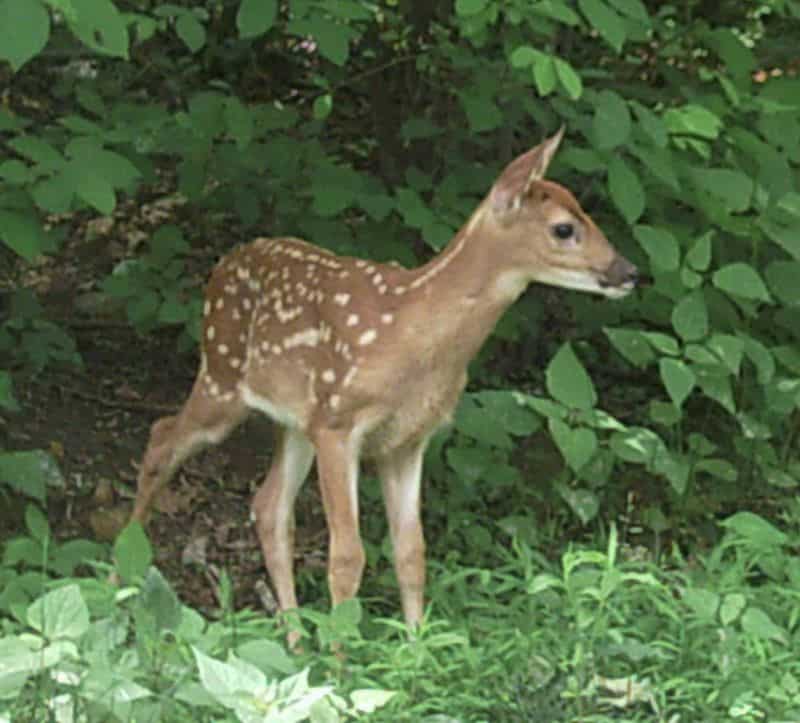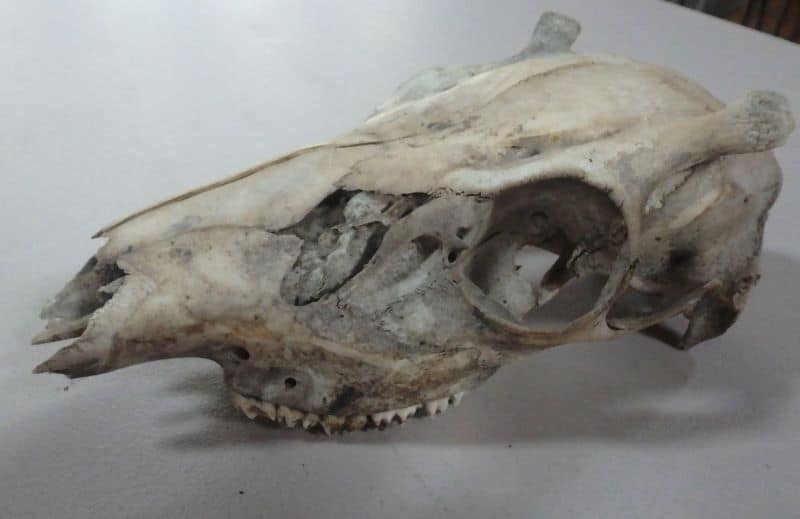Mariton: Button Bucks
by Tim Burris, Preserve Manager

A great photo of a button buck taken by the trail camera.
Like most people, I am fascinated by White-tailed Deer. As a kid, when deer were less abundant, I was just excited to see (and follow) their tracks. That youthful fascination led to study and pursuit. People may have heard the term “button bucks”, but may not know its meaning. Thanks to the trail camera, I have the resources to explain it. In White-tailed deer, the males (bucks) have boney growths on their skulls called pedicles. The antler begins growing out from the pedicle in the spring, and in late winter the antler separates at the pedicle and falls off.

You can even see where this month-old fawn’s antler will grow. Photo taken by the trail camera.
Even buck fawns born in May will begin growing antlers. By the time hunting season comes along, they may, or may not protrude. Even if they don’t visually protrude, you can feel the tiny antler, and thus the term “button buck”. So, a button buck is one year or less old. In their second year, they will grow true antlers. A yearling’s antlers could still be small depending on food resources and genetics.

This photo of a button buck’s skull gives you a better feel for the pedicle as well as the “button antlers”. Remember that the skull will be covered with muscle and hide making the protrusion less visible.
The head shapes of doe fawns and buck fawns are definitely different come November. Seasoned deer observers and hunters can easily detect these differences, but it takes a bit of observation to reach that skill level. In good habitat it is conceivable that a buck fawn (or button buck) could be as large as a year and half old doe. This is especially true if the buck fawn was born in May by an experienced mother, and the year and a half doe was born in July the year before.
In Pennsylvania, you will hear hunters use the common term “doe tags”. Technically they are “Antlerless Licenses” and can be used to harvest any antlerless deer in that unit, whether it is a female or a button buck.
